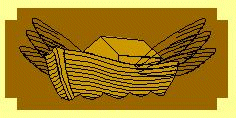
Photographs of Essex Windmills
Click on an image to see the full picture
Essex is a very flat county and therefore perfect for using the wind
as a source of power. In the early 1800's there were about 285 mills in the
county, but now few still exist and even fewer ever work.
Three types of windmill were commonly used in Britain and all can be found
in Essex. These are the post mill, the tower mill and the smock mill. They
differ in their methods of construction and in the ways used to turn their
sails to face the wind. The sails only work efficiently when they face directly
into the wind and so most windmills had some means of turning the sails to
achieve this.
With a post mill, the sails are built into the wooden body which houses the
machinery. The whole mill body is pivoted on a massive wooden post, allowing
the body and hence the sails to be turned to face the wind. The body is turned
either by using a long lever called a tailpole which can be pushed around by
the miller or by animal power, or else by a fantail. A fantail is a system of
gearing driven by a fan mounted at the rear of the mill which acts rather like
a wind vane and automatically keeps the mill facing to wind.
The main structure of a tower mill is built of brick or stone and so cannot be
rotated. The sails are mounted in a separate wooden cap which is arranged so
that it can turn on the top of the tower. This cap is rotated either by hand,
usually using gearing worked by chain from below or by a drive from a fantail.
The smock mill works in the same way as the tower mill, using a rotating cap,
but differs in that its main structure is built of timber and is usually
octagonal, on a masonry base.


